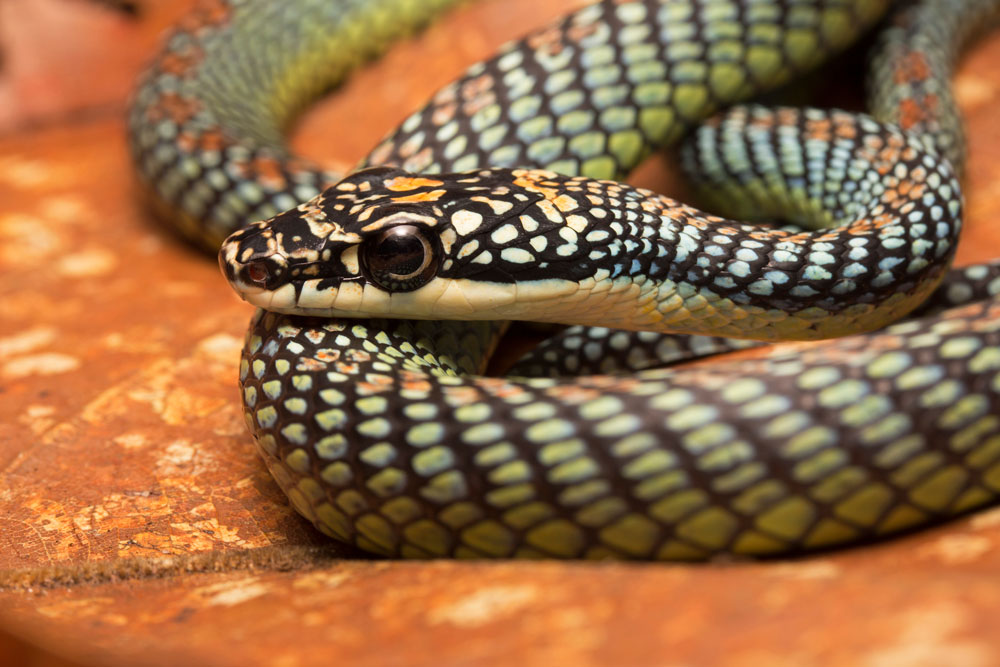The research was led by Jake Socha, professor in biomedical engineering and mechanics, Shane Ross, a professor of aerospace and ocean engineering, and Isaac Yeaton, lead author and recent doctoral graduate in mechanical engineering.
Researchers at Virginia Tech just published a paper in the journal Nature Physics that describes how the paradise flying snake (Chrysopelea paradisi) launches itself from great heights to reach areas further down slope in a phenomenon called aerial undulation whereby the snake’s body ripples with waves.
To attain the data, the researchers developed an anatomically accurate 3-D mathematical model of the reptile in flight.
The research was led by Jake Socha, professor in biomedical engineering and mechanics, Shane Ross, a professor of aerospace and ocean engineering, and Isaac Yeaton, lead author and recent doctoral graduate in mechanical engineering.
20 Years of Snake Flight School
Socha has spent the better part of 20 years studying the biomechanics of snake flight, observing, photographing, and analyzing 131 live snake glides. The team then used motion capture technology, placing motion points on the snakes prior to flinging themselves through the air. During the first step of the jump, the snake curves its body into a J-shape and as it launches, it changes its shape, flattening its body everywhere except the tail, the researchers noted. The snake’s body turns into what they call a morphing wing that produces lift and drag when air flows over it. They noted that the aerial undulation prevents the snake from tipping overland increases the distance in which the snake can “fly.”
Socha also noted the study found that two different types of undulation were at play when the snake launches through the air.
“A large-amplitude horizontal wave and a newly discovered, smaller-amplitude vertical wave. The waves went side to side and up and down at the same time, and the data showed that the vertical wave went at twice the rate of the horizontal one.” Double waves like this have only been seen with one other snake, the sidewinder.
The flying snake is of the genus Chrysopelea and is a colubrid snake that is known to glide from tree branch to tree branch. There are five known species of the flying snake and are mildly venomous. They can be found on mainland Southeast Asia as well as Greater and Lesser Sundas, Maluku and the Philippines, and China, India, and Sri Lanka. They eat lizards, frogs, birds and bats and hunt during the day. The paradise tree snake used in Socha’s study grows to about three feet in length and are black with green scales. Popular in the European pet trade, the paradise flying snake is considered one of the best flyers among the flying snakes.



